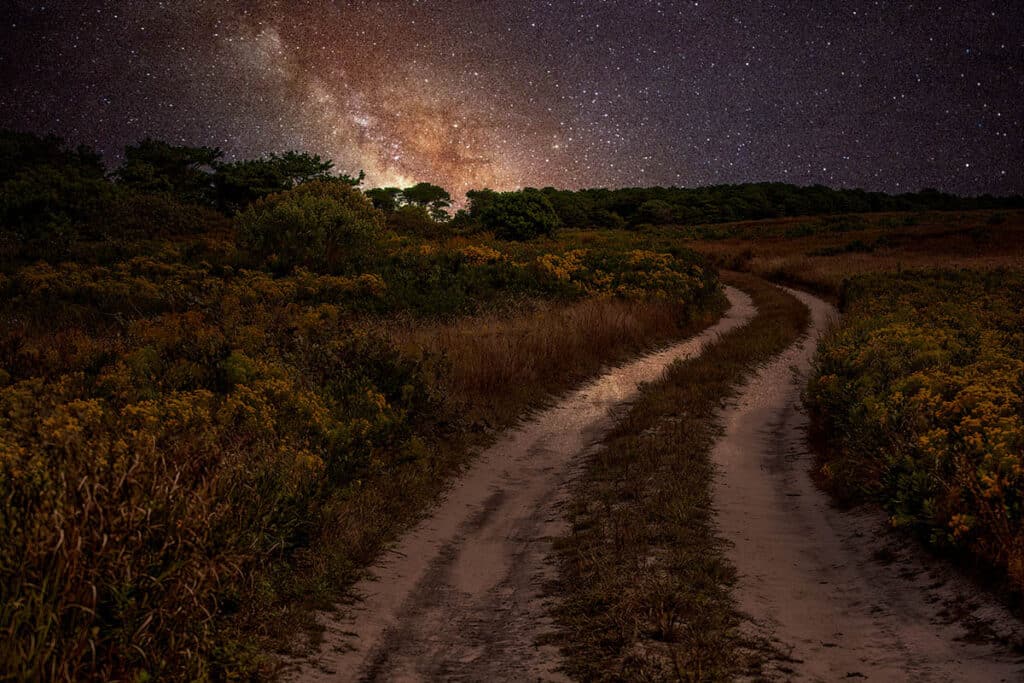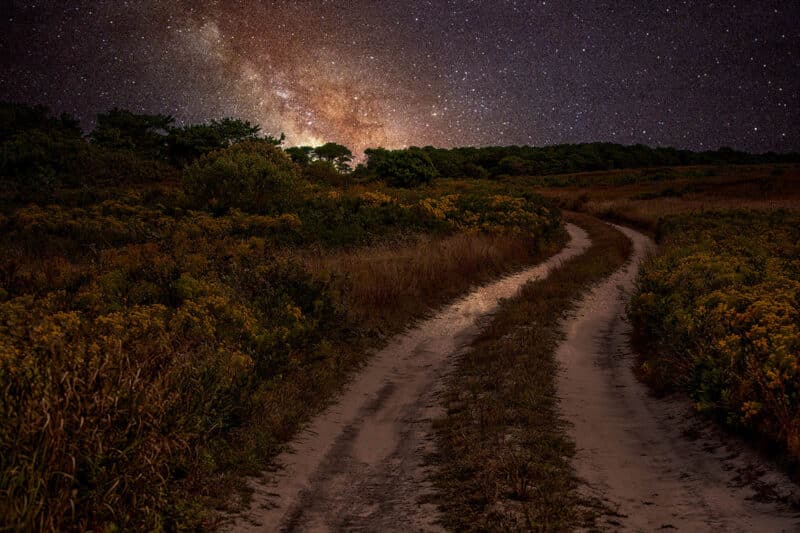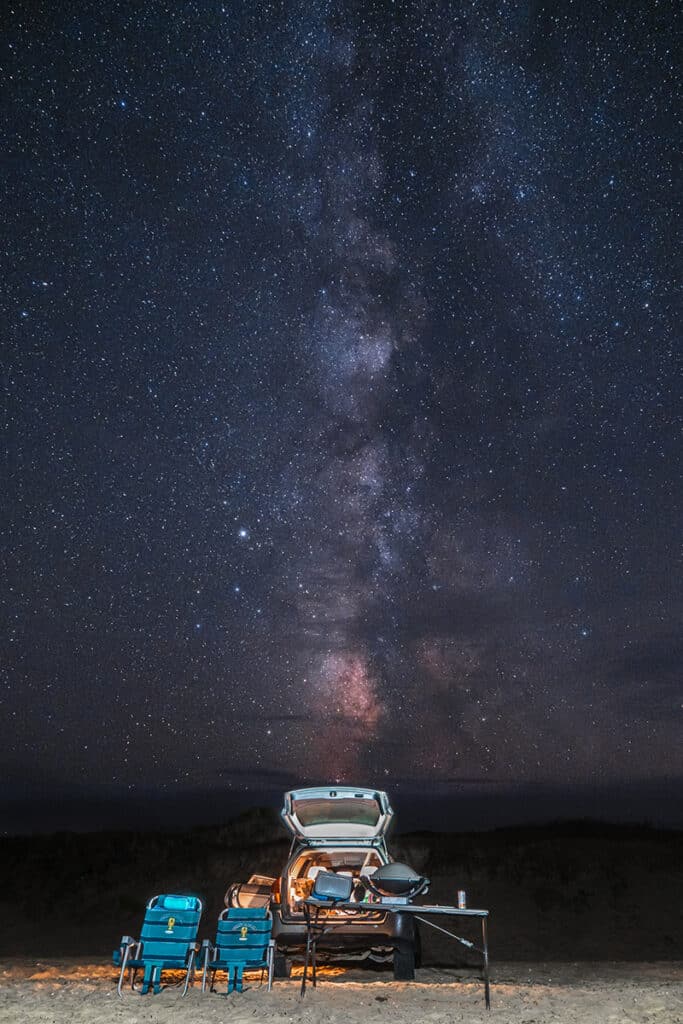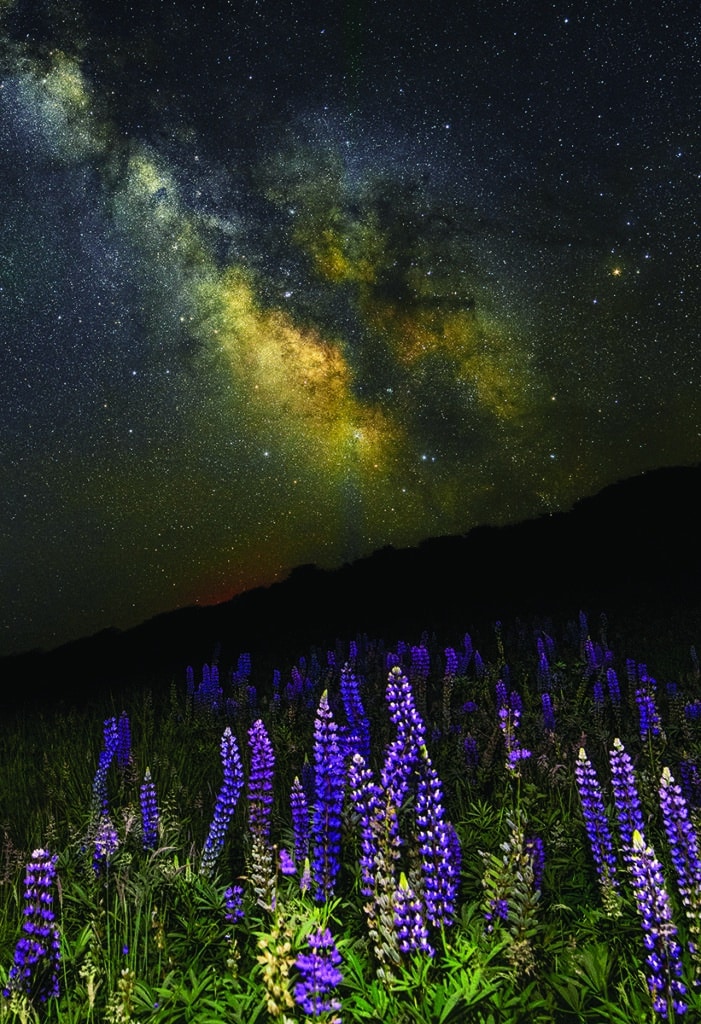by Dr. Sarah Treanor Bois
Director of Research & Education at the Linda Loring Nature Foundation
My first summer on Nantucket, in 1998 as a Maria Mitchell Association intern, was a magical experience for many reasons. Not the least of which was my first time to the beach at night. I will never forget the excitement of riding my bike in the dark with the other interns to catch a glimpse of the Perseid Meteor Shower one August summer night. Before I even saw one shooting star, I remember the awe-inspiring moment of looking up and seeing a sky full of bright twinkly stars. In a place like Nantucket, on this tiny island in the sea, the sky seems to go on forever into the ocean. Forget the sunsets that people “oooh and awe” about. The night sky of Nantucket is where the real show is!

People often remark that the island seems to have more stars than anywhere else. In reality, you can often see more stars and planets here than anywhere else. And have you ever seen the Milky Way from the beach or from the top of Altar Rock? Its a sight not soon forgotten. The reason for all of this celestial magic? Dark skies. Nantuckets isolation, vast amounts of undeveloped open space, and historic restrictions have made it an ideal sport for those seeking dark skies.
In recent years, however, dark skies are diminishing as we see a rise in light pollution locally. Primarily, light pollution has been seen in cities and towns where street lights, neon signs, and other bright lights blur the dark skies. That may have seemed like something far away from Nantucket, 30 miles out to sea, but now light pollution on Nantucket has increased 2.4% each year since 2012 (according to satellite data). That means that there is about 22% more light pol- lution today than just nine years ago.
A new citizen advocacy group called Nantucket Lights aims to do something about that. With a diverse steering committee that includes year-round as well as seasonal residents, its mission is to preserve and protect Nantuckets nighttime environment and heritage of dark skies by raising awareness about light pollution on the island and advocating for environmentally responsible outdoor lighting.
Its recently launched website — nantucketlights.org — is intended to serve as a resource for the community. It includes information about light pollution specific to the island, including information about Nantucket’s Outdoor Lighting Bylaw. Adopted in 2005, that bylaw contains a number of provisions to help preserve Nantucket’s dark skies that Nantucket Lights suspects many property owners aren’t aware of.
“Call me an optimist, but I truly believe that if there were more awareness about the harm of light pollution and how easy it is to switch to outdoor lighting that is darksky friendly we will be able to preserve our starry nights, which is one of the things that makes Nantucket so special,” says the founder of Nantucket Lights Gail Walker.
The website also has a link to a downloadable handout that property owners can use to learn about the “Five Principles for Responsible Outdoor Lighting” agreed on by the International Dark Sky Association ( darksky.org ) and the Illuminating Engineering Society.
Using an interactive light pollution map ( lightpollutionmap.info ) you can check out where on island has the highest amount of light pollution. Not surprisingly, currently the Nan- tucket airport and the area around the schools as well as downtown have the highest rates of light.
So why should we care about dark skies? It’s more than just the beauty and magic of the full view of the night sky. The Maria Mitchell Association (MMA) is one of the organizations that have signed on as a Nantucket Lights supporter. The MMA astronomy program produces nationally recognized astronomy research from our tiny island, educating the next generation of astrophysicists and astronomy educators in the process. “Nantucket’s dark skies are one of its most precious natural resources. Every summer, I hear the excited exclamations of hundreds of visitors who come out to a public Open Night at the Maria Mitchell’s Loines Observatory and see the Milky Way for the first time in their lives. This unique experience wouldn’t be possible without the concerted, island-wide efforts to preserve our dark skies,” said Dr. Regina Jorgenson, Maria Mitchell Asssociation Director of Astronomy.
Light pollution has also been shown to greatly affect wildlife. All animals, in- cluding humans, need darkness at night to thrive. Many animals eat, mate, and/or migrate at night. These patterns can be disrupted harming populations. In addition to disrupting circadian rhythms, excessive artificial light at night can also disorient birds during migration. Studies have shown that some bird species will cluster around brightly lit structures, much like insects flying around a porch light at night.
Sea turtle hatchlings, migrating insects, amphibian calls, and even coral reefs are affected by light pollution. Excessive light at night has also been shown to interfere with fireflies who use visual light cues (as well as pheromones) during mating season. More lights equal fewer fireflies.
As development increases around the island, so do concerns about furthering the light pollution issue. “I see this as one more thing that people need to be ed- ucated on to either put lights on timers, or motion sensors, use lighting with lower emissions, or just shut them off entirely, “says Danielle O’Dell, Nantucket Lights steering committee member. “We all have to really start implementing changes to our habits to lessen our impact on the planet. Every little change counts.”
One item of upcoming concern for Nantucket Lights is balancing the need for efficient energy consumption and dark skies. If the streetlights on Nantucket are converted to LED to save energy and cut the Town’s electricity costs, will they be dark-sky friendly? Nantucket Lights hopes to be an advocacy group to help ensure that best practices are followed.
Nantucket Lights, which is entirely non-profit and volunteer-run, hopes many more like-minded people will join them to show their support for its mis- sion and help it achieve its goals. For more information about joining this initiative, how to make sure your home and business is dark-sky friendly, and other ways to help, go to nantucketlights.org.
Right now, there are still places free of light pollution on-island. Working together, educating ourselves and each other about light pollution, and changing our everyday habits will help ensure our dark future.





